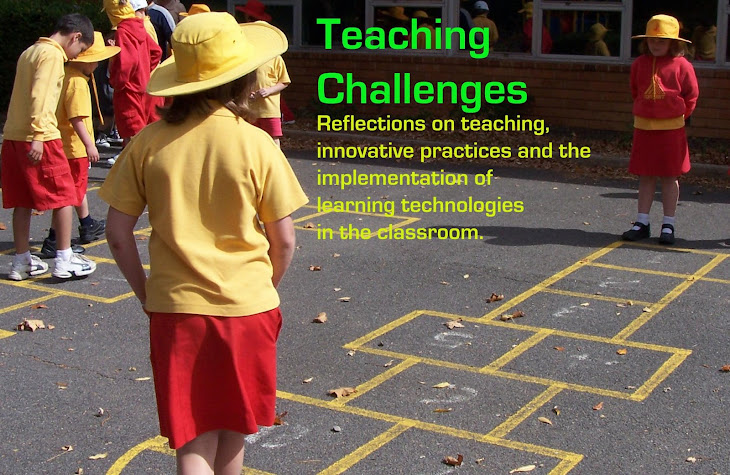Using ICT to Enhance Learning About 3D Solids
 As I headed into Term 3 I had grand plans about integrating ICT into the Maths Program. We had great success earlier in the year with the use of Beebots and basic programming lessons to give purpose to the language around location ie. left/right/forwards/backwards/up/down. Given that, I had high expectations for the use of Makers Empire and 3D Printing as part of our learning about 3D solids. I wanted for students to be able to explore and build 3D solids on an iPad and then see them turned into a physical object through 3D printing.
As I headed into Term 3 I had grand plans about integrating ICT into the Maths Program. We had great success earlier in the year with the use of Beebots and basic programming lessons to give purpose to the language around location ie. left/right/forwards/backwards/up/down. Given that, I had high expectations for the use of Makers Empire and 3D Printing as part of our learning about 3D solids. I wanted for students to be able to explore and build 3D solids on an iPad and then see them turned into a physical object through 3D printing.Implementing the 3D Printing Task
We staggered our teaching program across the year level to allow for shared use of resources across the term and arranged for our ICT Coordinator to come and work with our Maths classes during the last week of our 3D Solids learning. When our ICT Coordinator came students logged onto Makers Empire with student logins and she taught them the basics of the different aspects of the app. Students had some free time to explore and then worked on designing a building that used the 3D solids they had learnt about in class. They selected the one that they wanted printed, calling it "This is it!" to make it easier for me to find when it came to printing.
 All was going well until it came to the actual printing. We got some quick training on how to use the printer, but when I sat down to do it, it wasn't as easy as putting some paper in a printer and watching it do its work. The plastic didn't always come out smoothly where it was supposed to, so I had to sit and watch as it did its job to make sure it didn't mess up. These jobs were taking about 2 hours to print, so as you can imagine, I couldn't be there to babysit the machine the whole time as I had actual teaching to do! A couple of times the machine made a mess while I wasn't watching, leaving the jobs ruined and the nozzle in an icky mess.
All was going well until it came to the actual printing. We got some quick training on how to use the printer, but when I sat down to do it, it wasn't as easy as putting some paper in a printer and watching it do its work. The plastic didn't always come out smoothly where it was supposed to, so I had to sit and watch as it did its job to make sure it didn't mess up. These jobs were taking about 2 hours to print, so as you can imagine, I couldn't be there to babysit the machine the whole time as I had actual teaching to do! A couple of times the machine made a mess while I wasn't watching, leaving the jobs ruined and the nozzle in an icky mess. A couple of jobs did make it through to completion, but only because I sat by the machine, cleaning gloopy bits off the nozzle as it worked. Then there were also the creations students made that didn't work because of their design. They looked great as digital creations, but when trying to print with plastic, they just weren't practical.
A couple of jobs did make it through to completion, but only because I sat by the machine, cleaning gloopy bits off the nozzle as it worked. Then there were also the creations students made that didn't work because of their design. They looked great as digital creations, but when trying to print with plastic, they just weren't practical.We haven't labelled it a complete failure yet, and maybe I'll get the chance to print a few more during the holidays, but it was far from a huge success! I am not ready to call it quits on 3D printing, I just wish our printer was a bit more reliable and easier to use. I guess I have a few more failures to work through before I'll be able to enjoy the successes. I'm sure the first paper printers were not without their faults either. I have vague recollections of the poor quality of colour printing from my teenage years.
Other Successes
That said, we did have some other successes using less complicated ICT technology this term. Students took photographs of 3D solids from different perspectives and created a PicCollage to share with others. These looked great when printed and we displayed them on the wall. They also built solids using construction materials and took one photograph of the net and one photograph of the solid and recorded the audio naming the solid using Explain Everything Classic. These were combined using iMovie and shared with the class for revision. In another lesson students built a 3D structure using blocks, took a photo and then demolished their house for another group to rebuild using the photograph as a guide.
When I look back over all the ICT successes with 3D solids, the problems with the printer seem minimal. My students still walked away with an excellent understanding of the names and properties of 3D solids and an ability to work with them in a range of ways.
What have been your early experiences with 3D printers? How did you overcome the challenges?










